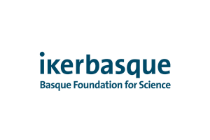 Aurreko ekintzak: Kalanit Grill-Spector. Understanding cognitive processing in the human visual system: from spatiotemporal population receptive fields to topographic deep neural networks
Aurreko ekintzak: Kalanit Grill-Spector. Understanding cognitive processing in the human visual system: from spatiotemporal population receptive fields to topographic deep neural networks
Kalanit Grill-Spector. Understanding cognitive processing in the human visual system: from spatiotemporal population receptive fields to topographic deep neural networks
What: Understanding cognitive processing in the human visual system: from spatiotemporal population receptive fields to topographic deep neural networks
Where: BCBL Auditorium and Auditorium zoom room (If you would like to attend to this meeting reserve at info@bcbl.eu)
Who: Professor Kalanit Grill-Spector (PhD, Deparment of Psychology, Stanford University
When: Thursday, Mar 20th at 12:00 PM noon.
A key goal of cognitive neuroscience is to generate an understanding of the functional neuroanatomy of cortical systems. Using computational encoding models and the visual system as a model system, I will describe recent empirical and computational innovations that have advanced understanding of key cognitive neuroscience questions: How do spatiotemporal computations by population receptive fields contribute to spatial and temporal integration across processing streams? What spatial/spatiotemporal computations explain elusive phenomena, such as simultaneous suppression? What computational constraints may lead to the formation of maps in visual cortex?
In the first part, I will describe new empirical and computational frameworks we have developed and validated – spatiotemporal receptive fields (st-PRFs) that estimate from fMRI data the spatial and temporal summation windows of each voxel in the visual system (units of visual degrees and milliseconds). Then, using st-pRFs, we elucidate neural spatial and temporal windows across the entire visual system and assess how simple, bottom-up computations together with nonlinearities like transients, contribute to simultaneous suppression.
In the second part, I will describe a new kind of deep neural network that we have developed – topographic deep neural network (TDANN). Different from a typical DNN, TANN model units are arranged retinotopically on a simulated cortical sheet and during self-supervised training the loss function encourages units on the simulated cortical sheet to have correlated responses. We find that this single unified principle predicts the function and spatial topography of maps at different scales in the visual system– from orientation, spatial frequency, and color patches in V1, to category-selective clusters in ventral temporal cortex, to the formation of three processing streams spanning the occipital, temporal, and parietal lobes.








